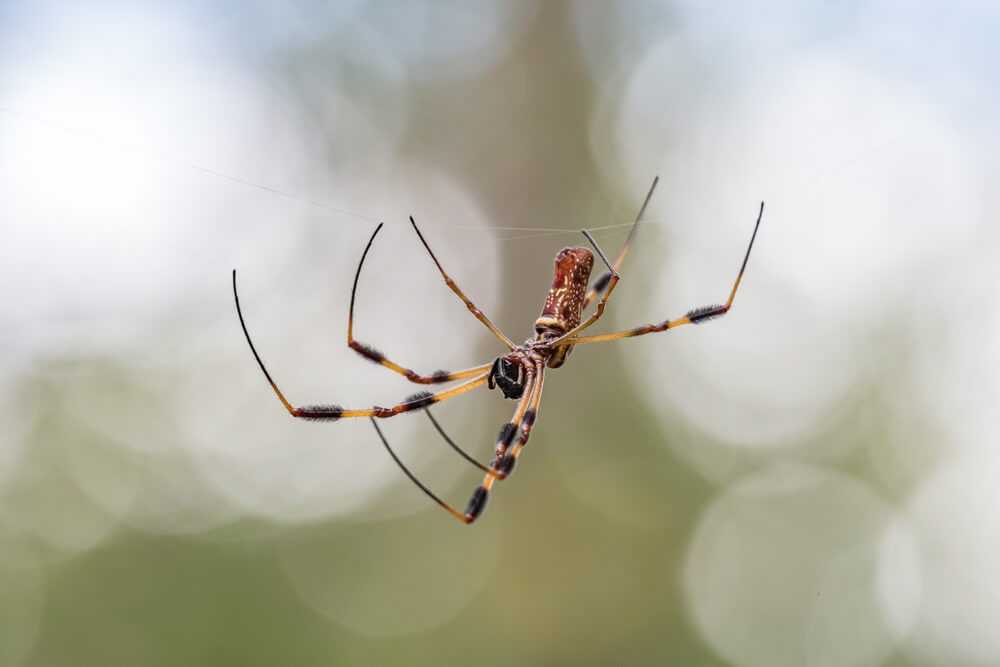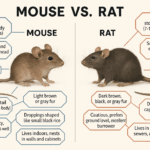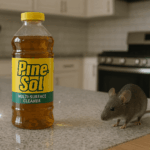Top Tips for Dealing With Banana Spider Infestations
Are banana spiders dangerous? Known for their striking golden webs and impressive size, banana spiders can be quite the spectacle. In this article, we will explore everything you need to know about banana spiders, from their behavior and habitat to dealing with infestations.
Key Takeaways
- Banana spiders, scientifically known as Trichonephila clavipes, are generally harmless and can be identified by their large size and distinct golden silk webs.
- Despite their intimidating appearance, banana spider bites are non-threatening to humans, causing mild pain similar to a bee sting, with recommended first aid measures including cleaning the bite area and applying ice.
- Preventive measures such as sealing entry points and regular cleaning can minimize banana spider infestations, while professional pest control services can provide effective management for persistent issues.
Understanding Banana Spiders
Spider species known as banana spiders stand out due to their vivid hues and substantial size, rendering them among the more conspicuous types of spiders. Despite being mostly non-threatening to humans, their formidable webs and daunting presence can still provoke excitement. Here we delve into several facts about banana spiders.
The identification of these spider species is possible through understanding their scientific taxonomy, distinctive physical attributes, and favored environments in which they reside.
Scientific Name and Classification
Trichonephila clavipes is the scientific name for what many commonly refer to as the banana spider, which actually represents a group of different species within that genus. The term ‘banana spider’ is not scientifically precise, but rather a colloquial label typically applied to these spiders.
The use of such non-scientific names can cause mix-ups with other closely related spiders, particularly with species like the Brazilian wandering spider.
Physical Description
Banana spiders, distinguished by their formidable size of 1 to 1.5 inches and elongated legs, present an imposing figure. These spiders are easily identified due to their light brown or yellow bodies adorned with conspicuous yellow and black patterns, setting them apart from other spider species. Their webs are some of the most expansive found in the United States, often spanning up to six feet across, and feature a distinctive golden tint that simultaneously disguises them while facilitating the capture of prey.
The silk spun by banana spiders exhibits extraordinary strength—exceeding even that of Kevlar—which lends exceptional durability to their extensive webs. The complexity of these structures reflects the remarkable architectural abilities of this species as they efficiently ensnare diverse forms of prey within these sturdy yet artful traps.
Habitat and Distribution
Banana spiders thrive in the southeastern United States, especially Florida, thanks to the region’s warm and humid climate. These spiders tend to inhabit concealed areas like forests, high grasslands, and shrubbery where they are frequently observed.
To reduce run-ins with banana spiders, steering clear of forested regions when these arachnids are most active can be beneficial. Since they gravitate towards isolated areas and typically remain undetected until their webs have been spun, being mindful and taking precautions is crucial for avoidance.
Web Construction and Hunting Behavior
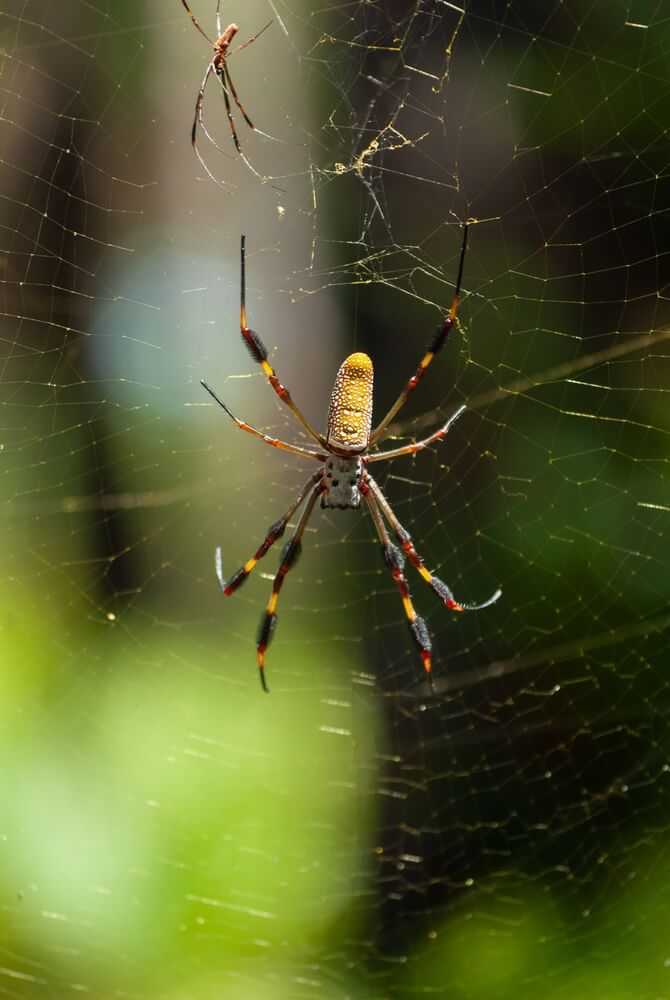
Banana spiders excel in crafting intricate webs across gardens, woodlands, and fields, strategically designed to ensnare flying insects effectively. Not only do these structures function as traps for their prey. They also provide female banana spiders with protection against potential threats.
The ingenuity behind their web construction and predatory tactics underscores the remarkable adaptability and survival instincts of these spiders.
Golden Silk Webs
Banana spiders are well-known for their ability to construct strong, golden silk webs that efficiently ensnare larger prey. The structure of these webs, crafted with non-sticky strands serving as a barrier, is integral in capturing insects and simultaneously signaling the spider about any movements within the web. This intricate web design is frequently mistaken for that of another species known as golden orb weavers.
The silk’s distinctive golden color acts both as camouflage and a defense mechanism against predators. These spiders strategically spin their webs in areas bathed in sunlight to maximize their hunting success, highlighting the strategic acumen of these arachnids.
Diet and Hunting Techniques
Banana spiders are predators that mainly consume flying insects such as flies and mosquitoes, thus playing a crucial role in managing pest populations. These spiders use their venomous bite to paralyze their insect prey. The venom is potent against the insects, but poses no significant threat to humans. Their hunting activities contribute important to ecological stability by keeping small pest numbers in check.
As you wander through garden paths or hike along trails, banana spiders diligently perform the task of regulating the insect population without drawing attention to themselves.
Assessing the Danger of Banana Spider Bites
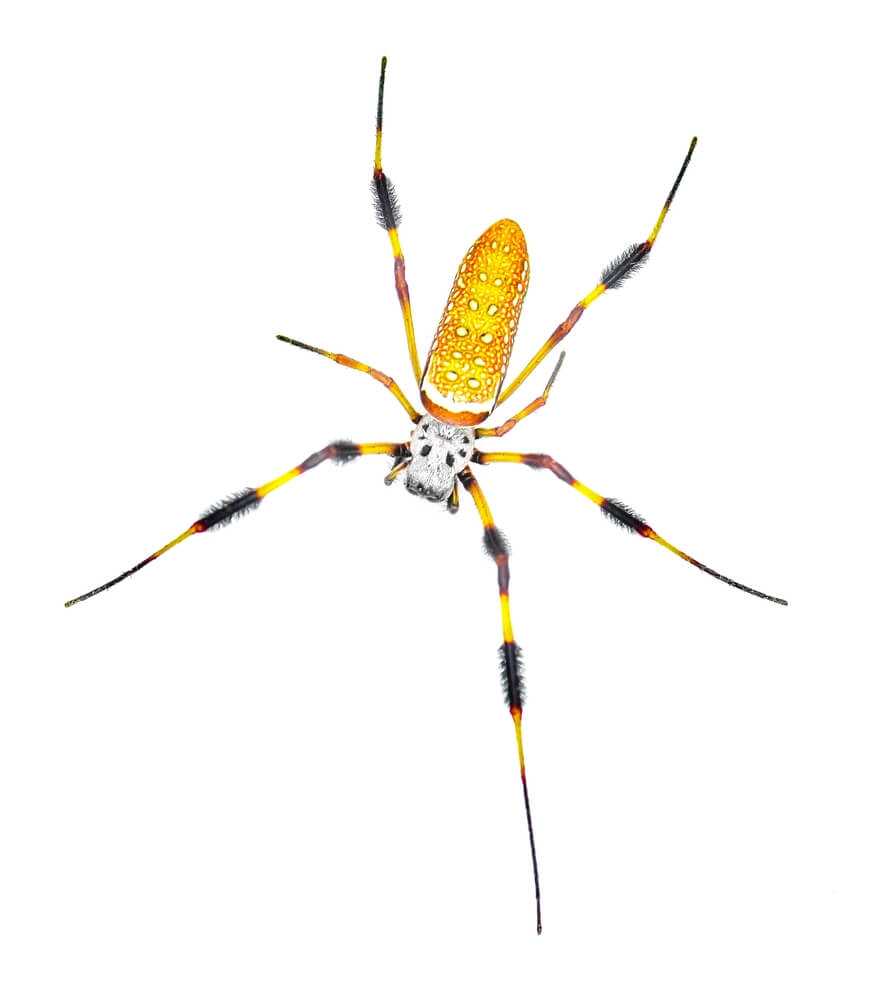
Despite their intimidating looks, bites from banana spiders are typically not dangerous to humans and happen mainly when the spider is provoked. Understanding the strength of their venom and applying proper first aid procedures can help alleviate any potential problems.
Venom Potency
The venom of banana spiders is considered relatively benign compared to other spider species. It induces mild discomfort and swelling, much like the effect of a bee sting. A bite from a banana spider may initially provoke acute pain. It typically doesn’t reach the severity level of a bee sting and diminishes swiftly.
Banana spiders are less menacing than certain dangerous spiders like the Brazilian wandering spider due to their low-venom potency. Their venom serves primarily to overpower their prey instead of representing a considerable hazard to humans.
First Aid for Bites
If bitten by a banana spider, it’s crucial to clean the bite area with soap and water to minimize the risk of infection. Applying ice can help reduce swelling and alleviate pain. Immediate first aid helps ensure safety and minimize symptoms.
Should you experience extreme pain, swelling, or signs of infection, seek medical attention promptly. Seek medical care if symptoms worsen or don’t improve with initial first aid.
Preventive Measures
In regions where banana spiders are common, it is essential to take precautionary steps in order to reduce the chances of being bitten by these arachnids. Adhering to a set of guidelines can help deter unintended interactions with these spiders.
Identifying Different Species of Banana Spiders
Different species of spiders, referred to as banana spiders, include the giant wood spider and golden silk orb-weaver. To identify these species accurately one can observe their unique characteristics like size, coloration, and the designs of their webs.
Common Species
The species often identified as the female banana spider is classified under the genus Nephila. These spiders are also known by several other names, such as golden silk orb-weaver and Brazilian wandering spider. A specific member of this group, the golden silk orb weaver or Nephila clavipes, stands out with its shiny silver shell that features yellow markings.
Female specimens of these particular spiders can reach sizes up to 3 inches and boast an eye-catching color pattern of black and yellow. This distinct appearance helps differentiate female golden silk spiders from other varieties within their realm.
Similar Species
Banana spiders and Brazilian wandering spiders share a resemblance that can lead to misidentification, though they exhibit markedly different behaviors and habitats. Whereas banana spiders are usually not aggressive, the bite from a Brazilian wandering spider is known for being particularly painful due to its aggressiveness.
The Hawaiian garden spider is also frequently mistaken for banana spiders owing to their visual similarity. It tends to have a flatter body shape and distinctive patterns compared with banana spiders. Distinguishing between these species accurately is important when considering their varied behaviors.
Managing Banana Spider Infestations
To handle infestations of banana spiders, it’s essential to take preventive actions along with seeking out expert pest control assistance. Below are effective strategies for preventing such situations and the advantages that come from employing professional pest management solutions.
Prevention Tips
Using screens on windows and doors can help prevent banana spiders from entering your home. Homeowners should also seal cracks and crevices around the house to minimize entry points. Eliminating outdoor lighting that attracts flying insects can reduce banana spider populations near homes.
Regular cleaning to remove webs and clutter is essential for discouraging banana spiders from taking up residence. Maintaining a tidy yard by removing debris and cutting back tall grass can also help reduce their habitats.
These prevention measures can significantly decrease the chances of banana spiders invading your space.
Professional Pest Control
Should banana spider infestations prove more stubborn, PURCOR’s specialized pest control solutions can effectively regulate these populations. Their services are crafted to safeguard residential and commercial spaces from intrusive pests such as spiders. Licensed experts from PURCOR apply targeted interventions focused on curbing spider outbreaks, which guarantees extended control and reassurance for their clients.
With local management at its core, PURCOR holds a steadfast commitment to the communities within its reach, pioneering advancements in the field of pest management. Whether it’s remediation post-infestation or regular preventative maintenance that is needed, PURCORe remains devoted to ensuring their customers enjoy an environment free of pests.
Frequently Asked Questions
What does PURCOR offer to protect homes or businesses?
PURCOR delivers professional pest management solutions to protect residential and commercial properties from intrusive pests efficiently.
What types of pests does PURCOR manage?
PURCOR effectively manages a variety of pests, including ants, mice, spiders, roaches, rodents, and seasonal invaders.
This comprehensive approach ensures your space remains pest-free all year round.
What can customers rely on when choosing PURCOR Pest Solutions?
Customers can rely on licensed professionals at PURCOR Pest Solutions for effective rodent control and removal services around their property.
Their expertise ensures a thorough approach to pest management.
What resources does PURCOR provide regarding termites?
PURCOR offers valuable resources that address termite bonds, potential damage caused by termites, and information on different types of termites.
This can help you make informed decisions regarding termite prevention and treatment.
What additional service does PURCOR offer after pest infestations?
After a pest infestation has been dealt with, PURCOR provides services to help clean and ensure that your basements or crawlspaces are free of pests.
"*" indicates required fields
"*" indicates required fields
